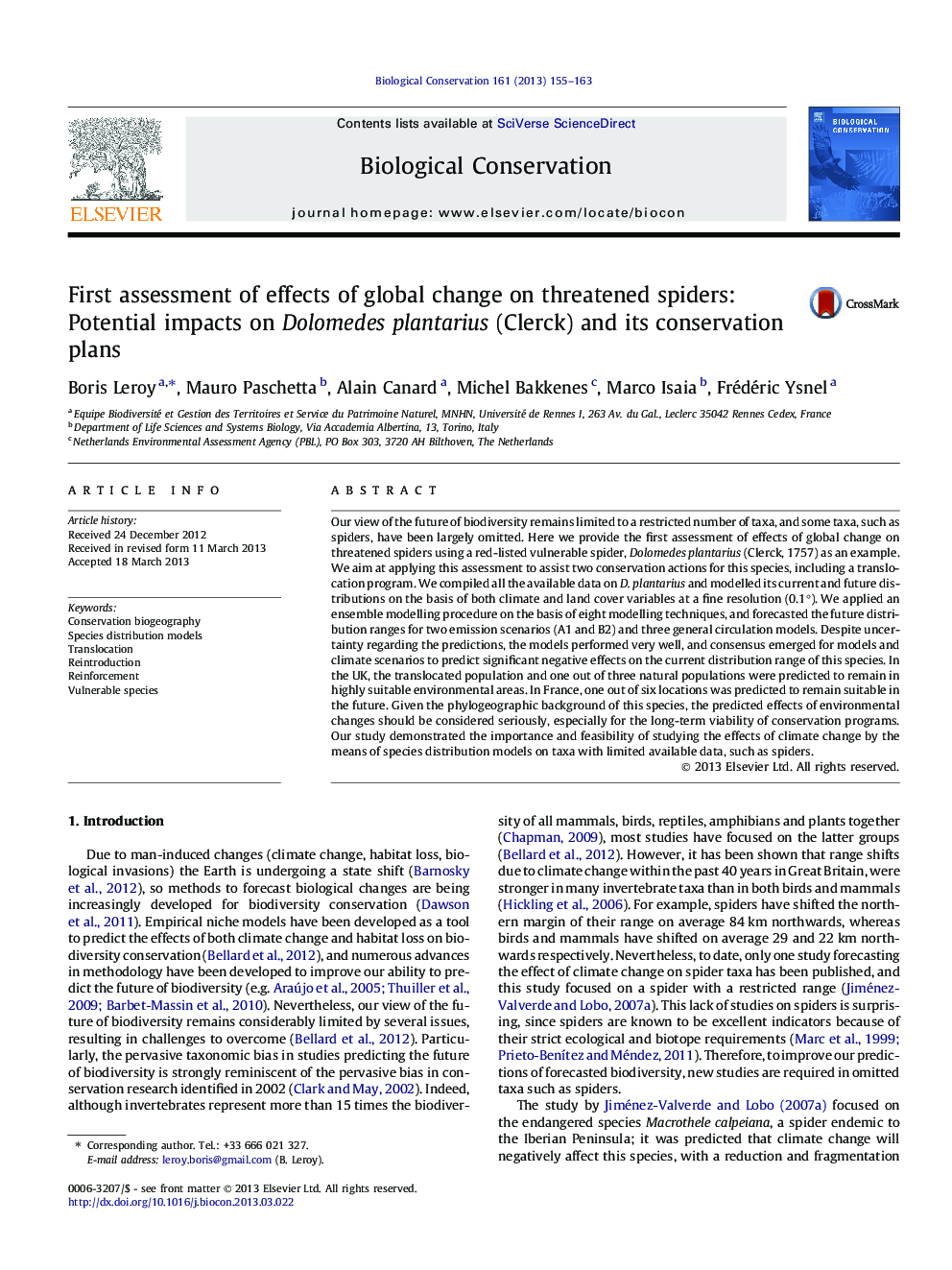| Article ID | Journal | Published Year | Pages | File Type |
|---|---|---|---|---|
| 6300725 | Biological Conservation | 2013 | 9 Pages |
Abstract
Our view of the future of biodiversity remains limited to a restricted number of taxa, and some taxa, such as spiders, have been largely omitted. Here we provide the first assessment of effects of global change on threatened spiders using a red-listed vulnerable spider, Dolomedes plantarius (Clerck, 1757) as an example. We aim at applying this assessment to assist two conservation actions for this species, including a translocation program. We compiled all the available data on D. plantarius and modelled its current and future distributions on the basis of both climate and land cover variables at a fine resolution (0.1°). We applied an ensemble modelling procedure on the basis of eight modelling techniques, and forecasted the future distribution ranges for two emission scenarios (A1 and B2) and three general circulation models. Despite uncertainty regarding the predictions, the models performed very well, and consensus emerged for models and climate scenarios to predict significant negative effects on the current distribution range of this species. In the UK, the translocated population and one out of three natural populations were predicted to remain in highly suitable environmental areas. In France, one out of six locations was predicted to remain suitable in the future. Given the phylogeographic background of this species, the predicted effects of environmental changes should be considered seriously, especially for the long-term viability of conservation programs. Our study demonstrated the importance and feasibility of studying the effects of climate change by the means of species distribution models on taxa with limited available data, such as spiders.
Keywords
Related Topics
Life Sciences
Agricultural and Biological Sciences
Ecology, Evolution, Behavior and Systematics
Authors
Boris Leroy, Mauro Paschetta, Alain Canard, Michel Bakkenes, Marco Isaia, Frédéric Ysnel,
